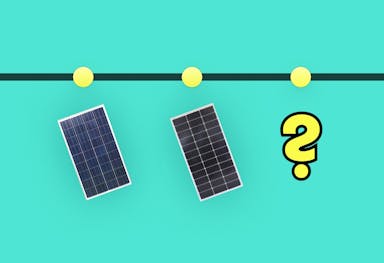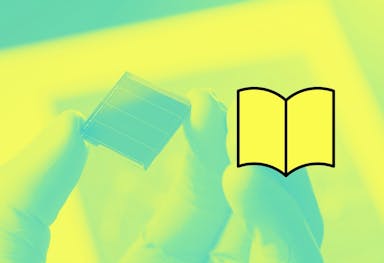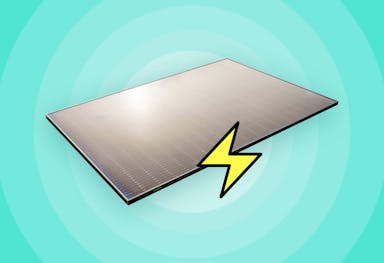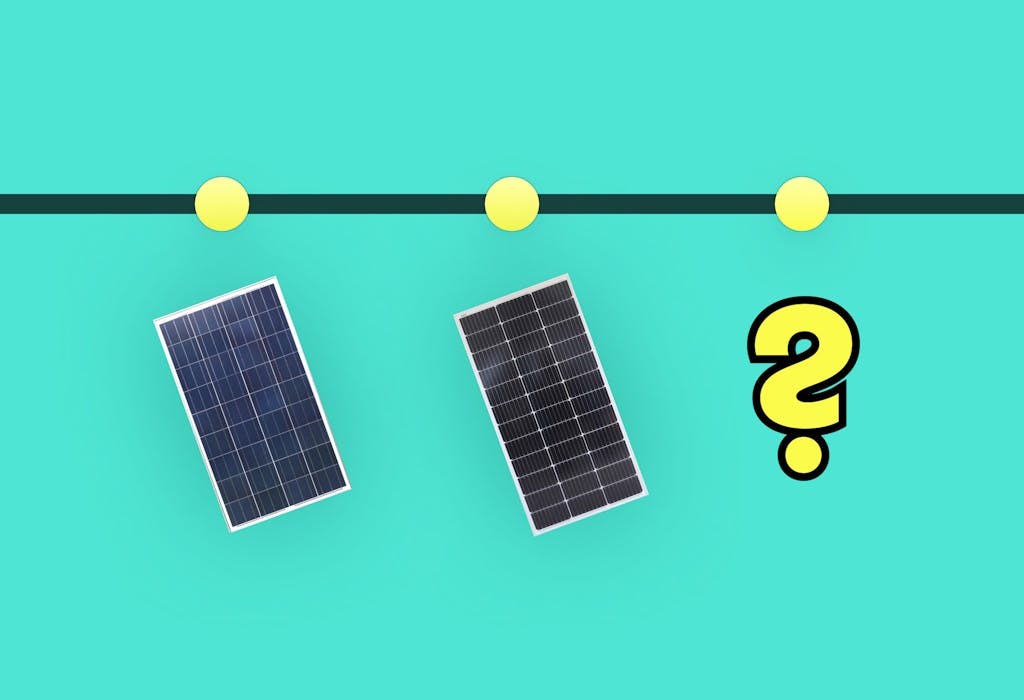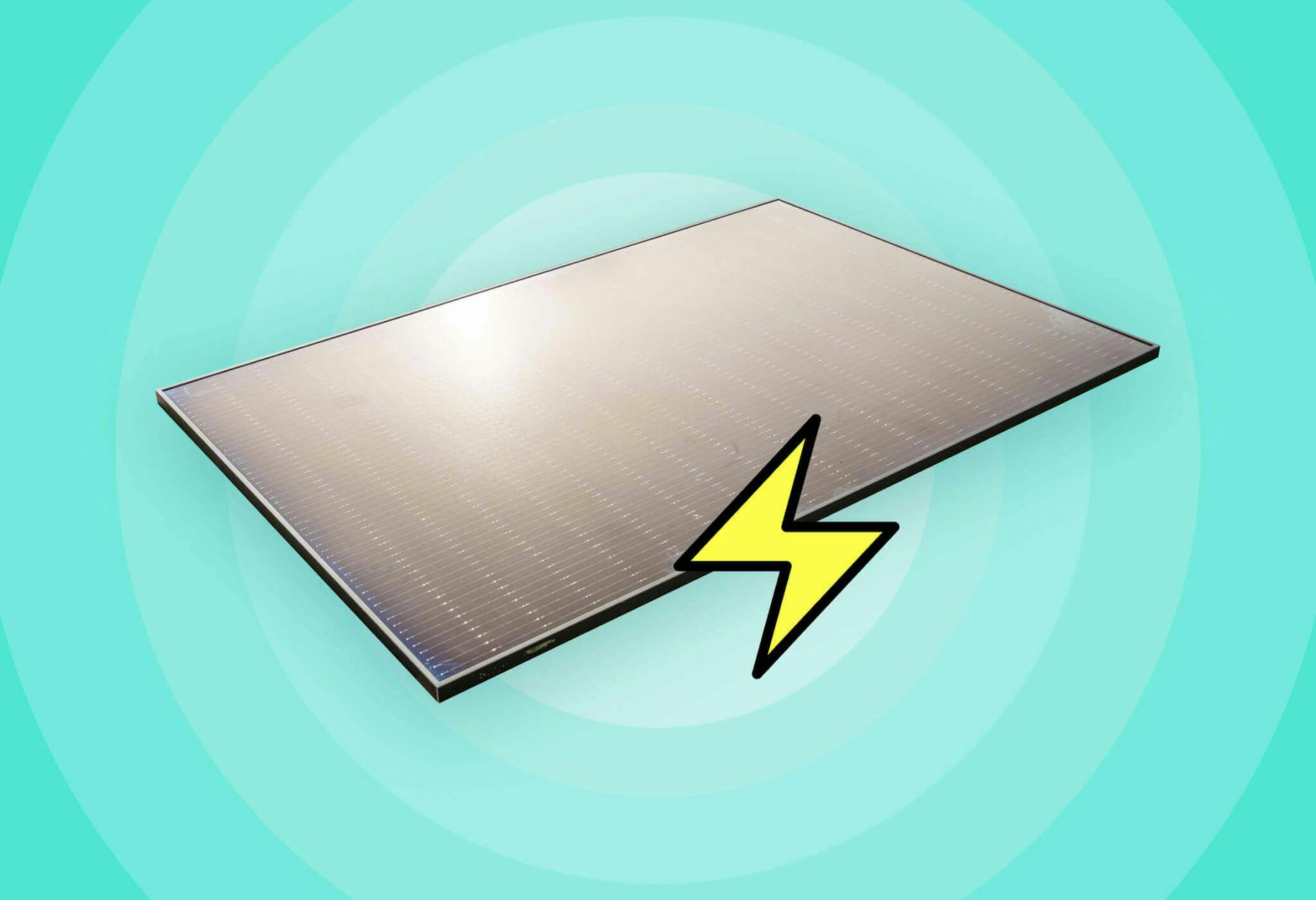- Solar advice hub
- How-solar-works
- How efficient are solar panels?
How efficient are solar panels?
Here's what solar panel efficiency means, why it's important, and how it should inform your solar panel system purchase.


Why you can trust our content
We know that the solar industry is full of misinformation, but we only use reliable sources, including:
- Our experienced solar experts, installers and system designers
- Our own database of solar & battery system designs
- Authoritative bodies like MCS and the UK government



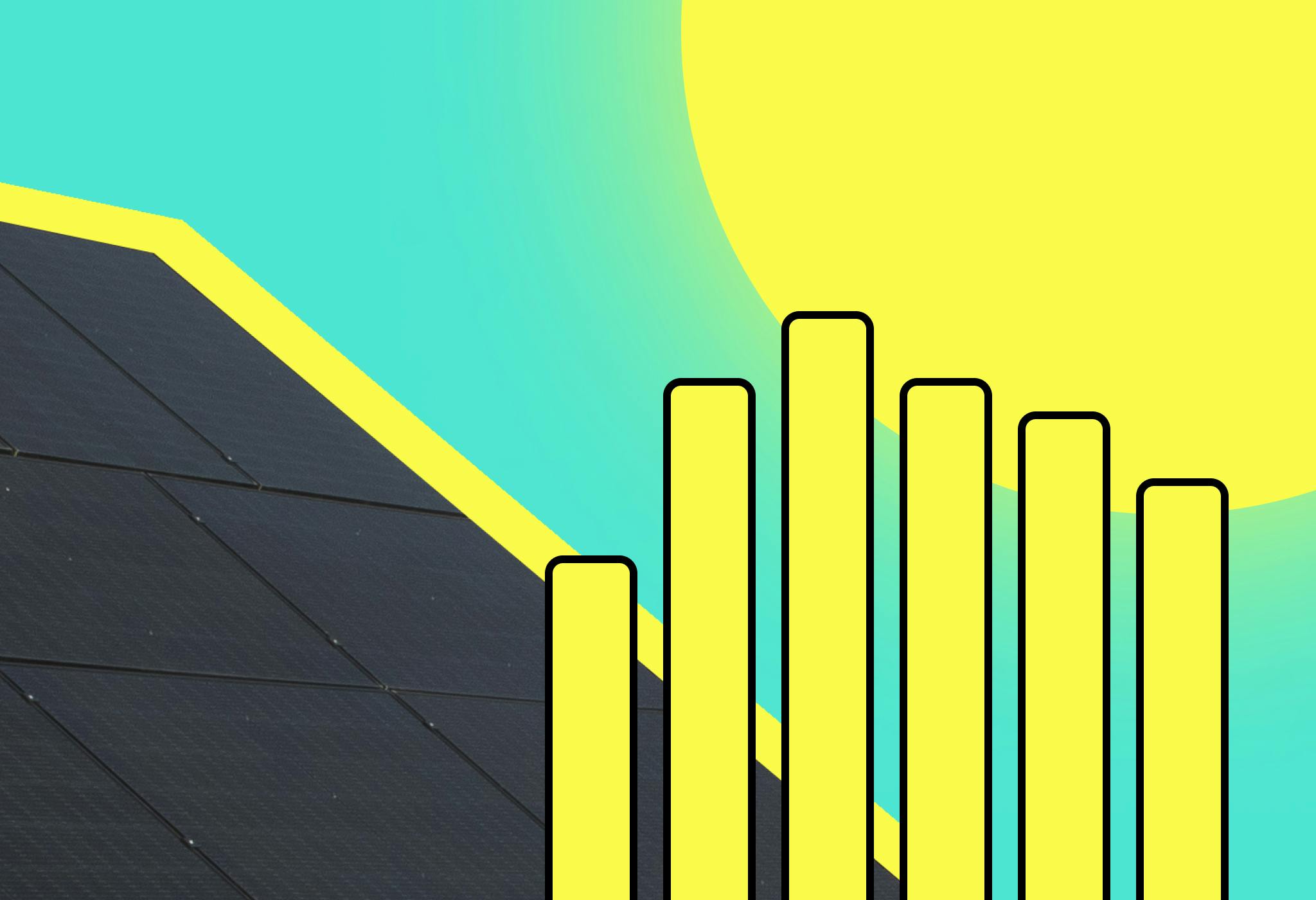
Calculate savings
What kind of home do you live in?
Calculate savings
What kind of home do you live in?
Solar panel efficiency: at a glance
Solar panels have rapidly increased in efficiency over the past few decades.
Progress has slowed in recent times, but having reached a top efficiency rating of 25%, domestic panels are effective enough to make the most of any space you have on your roof.
In this guide, we'll explain what solar panel efficiency means, why it's important, and how it should inform your solar panel system purchase.
If you’re interested in switching to solar, you can find out how much a solar & battery system could save you by answering a few quick questions below.
Find out how much you can save
What kind of home do you live in?
What does ‘solar panel efficiency’ mean?
'Solar panel efficiency' refers to the amount of naturally occurring light a solar panel can convert into electricity in standard test conditions, which is a set of environmental factors used across the industry to measure efficiency.
This amount is expressed as a percentage – so if a solar panel is 20% efficient, this means it can turn 20% of the natural light that hits it into electricity you can use.
A solar panel's efficiency is one of its most crucial attributes, as it massively effects how much electricity the system will produce for your home.
How is solar panel efficiency measured?
To measure a solar panel's efficiency, manufacturers track its output under standard test conditions.
This involves ensuring the cell's temperature is 25°C, exposing the panel to a controlled light source that shines at an intensity of 1,000 watts (W) per m², and creating an air mass of 1.5 to simulate sunshine's long journey to Earth.
The percentage of light that the panel manages to turn into solar electricity is its efficiency rating.
As solar panel efficiency is a measure of output under certain conditions, it naturally follows that a panel's output will be higher or lower depending on the weather – but it's one of the best ways to compare different panels.
Verified expertPeople think that you need perfectly sunny weather to make solar panels worthwhile, but this isn’t the case - all solar panels need in order to generate electricity is daylight, not sunlight. There are many other factors beyond location that have an impact on generation, including roof size, pitch, orientation and shading.
Alfie Ireland
Head of Operations & Technical at Sunsave
Alfie has worked in green tech for over a decade. During his four years at OVO, he helped develop the world’s largest domestic vehicle-to-grid trial.
What’s the average efficiency of a solar panel?
The average efficiency of domestic solar panels is between 20% and 25%.
You shouldn't generally settle for anything under 20%, especially considering that the higher the efficiency, the more panels you can fit on your roof – and the more money you'll save overall.
A solar panel's efficiency will vary depending on the brand and the type of solar panel.
Monocrystalline solar panels – the black models used in most installations these days – typically have efficiencies above 20%, while the out-of-production blue polycrystalline solar panels usually offered efficiency rates of 18% to 21%.
What’s the most efficient type of solar panel?
The most efficient type of solar panel in existence is the perovskite-silicon tandem panel.
China-based manufacturer Trina Solar revealed in June 2025 that it'd set the current efficiency record with one of these panels, reaching 30.6%.
And companies including Oxford PV and Chinese brand LONGi have long surpassed the 30% efficiency mark for a single perovskite-silicon cell.
However, there have been numerous challenges and complications associated with producing a stable version of this product, meaning fully fledged perovskite solar panels could still be years away from hitting the market.
The most efficient commercially available type of solar panel is the monocrystalline silicon panel. Top-tier monocrystalline panels typically have an efficiency rating above 20%, and go as high as 24.8%.
What’s the least efficient type of solar panel?
The least efficient type of available solar panel is the transparent panel.
These models are usually between 1% and 10% efficient, and only 30-40% transparent at present, which means they're not suitable for domestic properties.
Instead, they're better off on large commercial or public buildings, where the huge number of windows – and high energy usage – will make the investment worthwhile.
It therefore makes sense that transparent solar panels have so far been used in the UK on properties like Gloucestershire County's Council Hall, London's Barbican Theatre, and Bournemouth University, rather than homes.
Their efficiency rate also isn't too far behind thin-film solar panels, which have an average efficiency of 7% to 13% and typically come with about half as long a lifespan.
The upside of these models is that they’re cheaper than traditional solar panels, easily installed, and made to be flexible, which makes them ideal for caravans and boats.

The UK's first solar subscription
- No upfront cost
- Fixed monthly fee
- 20-year Sunsave Guarantee
How much has solar panel efficiency improved over time?
Solar efficiency has improved enormously over time, ever since 1883, when American inventor Charles Fritts covered a semi-metallic element called selenium with a thin layer of gold and put it on a New York City rooftop.
Those 1-2% efficient cells were only significantly outdone in 1954, when Bell Labs scientists in New Jersey used silicon to create the first commercially viable solar cell, with an efficiency of 6%.
Researchers developed this silicon-based technology rapidly over the next few decades, surpassing 20% in 1985 at Australia's University of New South Wales, then 30% just four years later at aerospace company Boeing.
Californian company Spectrolab broke the 40% barrier in 2006, and Germany's Fraunhofer Institute for Solar Energy Systems hit the current record of 47.6% in 2022, but turning these increasingly efficient solar cells into similarly efficient panels has proved difficult.
The best solar panels on the market at the moment in terms of efficiency are the Hi-MO X10 Scientist and Tiger Neo 3.0, which are both 24.8% efficient.
The chart below is based on a report from the US government-funded National Renewable Energy Laboratory, who have recorded all major breakthroughs in solar cell efficiency since the mid-1970s.
Solar cell efficiency 1976-2024
Why aren’t residential solar panels as efficient as lab solar cells?
- Solar panels have extra parts – like a back sheet, frame, and glass – that also count towards efficiency ratings
- Lab conditions don't reflect real-life installations
- Companies will put more time and effort into a lab cell than a panel on the production line
Some residential solar panels have reached an all-time efficiency high mark of around 24.8%, which is miles behind the 47.6% record set by lab-based solar cells. This large gap comes down to a few reasons.
The main factor is that a lab cell is made exclusively to turn daylight into electricity, with no concern for its longevity, effectiveness in different conditions, or ability to stay on a roof.
In contrast, solar panels are made with hardware like the frame, backsheet, and tempered glass that connects, protects, and secures them – but doesn't generate electricity.
Efficiency is measured across the entire panel, including these parts, so it's inevitably lower than it is for cells.
Life is also different for cells outside the lab, where they may have to deal with a difficult, even hostile environment that could include hazards like shade, snow, or hail. They aren't in standard test conditions anymore.
Also, a company that's trying to break an efficiency record in search of positive press will naturally put more effort and money into perfecting a cell than it'll put into a panel on the production line.
And once they've finished developing these extremely refined cells, trying to mass-produce them to be part of panels without breaking the bank is difficult – which is part of why there are still no perovskite solar panels on the market.
What factors affect a solar panel’s efficiency?
There are multiple factors that will affect your solar panel system's efficiency level.
Before you get your system, its efficiency will be shaped by countless scientific and manufacturing processes.
Once you have panels on your home, here are the attributes that will have the biggest impact:
- Material
- Heat
- Degradation
Material
Just like furniture and windows, all solar panels slowly decline over a period of decades – but what they're made of will massively impact how quickly this process happens.
Monocrystalline solar panels are the slowest to lose their efficiency, with top-tier models giving up just 0.5% of their original efficiency each year.
This means these panels – which are made from a single block of silicon – can keep producing substantial amounts of electricity after 40 years or more, unlike polycrystalline panels, which degrade significantly faster.
Solar tiles and transparent panels also degrade at a quicker rate, though not as rapidly as thin-film models, which usually only last 10-20 years.
Heat
Your solar panels can temporarily lose some of their efficiency in extremely hot temperatures.
They won't stop working, since they can cope with being as hot as 85°C – but their output will drop.
For every degree they heat up beyond 25°C, your system will lose around 0.3% of its efficiency rating.
But when the weather cools down, its efficiency level will return to normal.
Since solar panels are naturally warm, extremely cold temperatures don't affect them in the same way. Most systems would only start malfunctioning if the thermometer fell beyond -60°C – which doesn't happen in the UK.
Degradation
Solar panels slowly degrade over the years, though at a very slow rate.
Their average rate of degradation is just 0.5%, as long as you get monocrystalline panels.
So after 30 years, your system should still be producing around 86% of its original output – meaning it copes much better with the passage of time than many of us do.
Solar panel degradation is normal, inevitable, and multifaceted. Causes can include frame corrosion, long-term exposure to UV rays causing the backsheet to break down, debris and hail creating tiny cracks in the surface of the panel that affect electrical connections, and internal wires experiencing standard wear and tear.
The best way to minimise the effects of degradation on your panels is to ensure you get top-tier panels with an excellent performance warranty, and to choose Sunsave Plus, which comes with 24/7 monitoring and maintenance.

What technology can improve solar panel efficiency?
There are a few different technological advancements that are set to revolutionise solar panel efficiency in the coming years.
Some are already in use, either in large-scale commercial projects or in an increasing number of domestic systems.
Bifacial
Bifacial solar panels absorb light on both sides. This sets them apart from traditional panels, which only use one side for this purpose.
They manage this feat by using a transparent backsheet made of a reflective material, such as strengthened glass.
This allows them to make the most of the albedo, which is the sunlight that’s reflected by a surface – like your roof.
As a result, bifacial solar panels are more efficient than standard panels, though how much of an advantage they have is unclear.
It usually depends on the gap between your panel and roof, how reflective your roof tiles are, the angle of your roof, and the effectiveness of your bifacial panels.
A 2023 summary of 12 studies from all over the globe found that bifacial systems produce anywhere from 5% to 45% more electricity than traditional panels , which shows the importance of the circumstances they're used in.
PERC
PERC stands for Passivated Emitter and Rear Contact, and refers to a technique used on the back of a solar panel during the manufacturing process.
Firstly, the back layer is made reflective, so any unabsorbed light rebounds through the panel to the cells above, giving them another chance to use it. This allows panels with PERC to make better use of the light they receive than most models.
A passivation layer is then added so that the panel takes on less heat, and therefore avoids overheating and losing efficiency.
However, PERC is rapidly falling behind heterojunction (HJT) and Tunnel Oxide Passivated Contact (TOPCon) in the technological stakes.
These approaches build on PERC with additional features that work to increase a panel's efficiency even further.
Half cell
Half cell solar panels are exactly what they sound like: panels composed of cells that have been cut in half.
These cells are connected in series – that is, on one string. Two of these strings are then connected in parallel, ensuring that the panel's overall voltage doesn't exceed that of a traditional panel.
This lowers a panel's resistive losses, improve its defences against shade, and make hotspots less likely.
Some of the best solar panels on the market at the moment use half cells.
Concentrator Photovoltaics
Concentrator Photovoltaics, also known as CPV, is a technique that concentrates sunlight with curved lenses or mirrors onto tiny, specialised solar cells.
This process leads to solar irradiance levels that are equivalent to 1,000 suns or more. To put that into context, domestic panels receive their rating from tests carried out under one-sun conditions.
CPV is generally only used in hot parts of countries including South Africa, Spain, and the US, by large energy companies that sell the energy they produce to the grid.
It's not available for residential use, both because it's extremely expensive and because it requires a decent amount of cooling equipment to avoid overheating.
However, it will almost certainly inform future domestic solar developments.
Solar panels vs other renewable energy tech
Unfortunately, one disadvantage of solar panels is that they're not the most efficient source of renewable energy out there.
However, the best source of renewable energy for a specific place doesn’t just come down to efficiency.
It depends on multiple factors, including climate, geography, costs, maintenance, and specific energy needs. And when it comes to small-scale, residential installations, no other renewable energy source comes close to beating solar for effectiveness.
Let’s compare the respective efficiencies of wind, hydroelectric, and geothermal systems.
Wind power efficiency
Wind power efficiency is measured by how much kinetic energy (the energy an entity like wind has when it's moving) a turbine can turn into electricity.
The maximum theoretical efficiency, known as the Betz limit, is 59.3%.
Modern wind turbines typically achieve efficiencies of 35% to 45%.
Wind power efficiency varies according to the wind speed, air density, blade size, and turbine spacing, among other factors.
Hydroelectric power efficiency
Hydroelectric power is created by harnessing the natural movement of flowing water to spin turbines.
It's one of the most efficient sources of renewable energy, converting around 90% of the available kinetic energy into electricity.
One of the reasons why it’s not 100% is because of friction between the shaft of the motor and the turbine. These parts never spin together without at least a small amount of friction, and this consequently reduces the total amount of energy the turbine can generate.
There’s also friction between the water and the turbine, which again causes energy losses.
Geothermal power efficiency
Geothermal power plants, which get their energy from reservoirs of hot water located miles under the Earth's surface, have an average efficiency of 12%.
Though that may not seem as impressive as solar and hydroelectric power, geothermal plants can operate 24/7, unlike solar panels that need daylight to work.
Geothermal electricity isn't the most efficient, but it's consistent, making it a reliable power source for more than two dozen countries around the world.
Summary
Solar panels have become an efficient, reliable way to create renewable energy that's good for you and the planet.
After a period of rapid growth from the 1950s to the 2000s, efficiency levels haven't risen much in the past decade or two – but they don't need to go up to dramatically cut your energy bills.
These high efficiency rates mean you can cover even more of your roof with panels, allowing you to maximise your profits.
If you're considering making the switch to solar, Sunsave is here to help. For more information about how much a solar & battery system could save you, provide us with a few quick details and we'll get back to you with an estimate.
Find out how much you can save
What kind of home do you live in?
Solar panel efficiency: FAQs
Related articles

Written byJosh Jackman
Josh has written about the rapid rise of home solar for the past six years. His data-driven work has been featured in United Nations and World Health Organisation documents, as well as publications including The Eco Experts, Financial Times, The Independent, The Telegraph, The Times, and The Sun. Josh has also been interviewed as a renewables expert on BBC One’s Rip-Off Britain, ITV1’s Tonight show, and BBC Radio 4 and 5.



